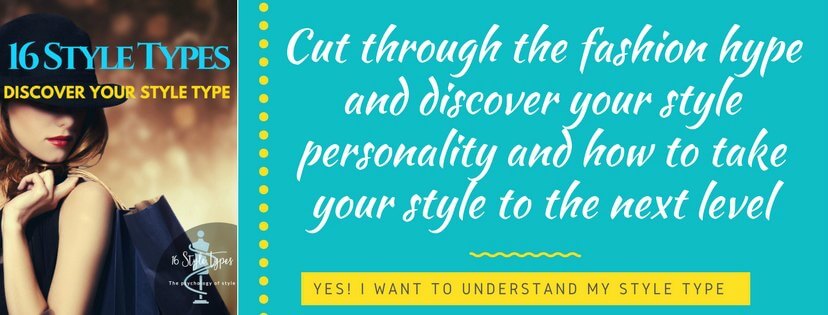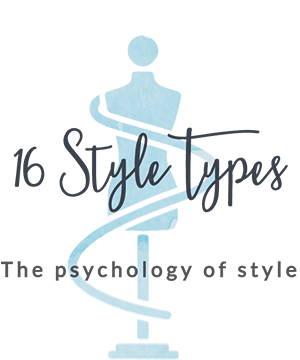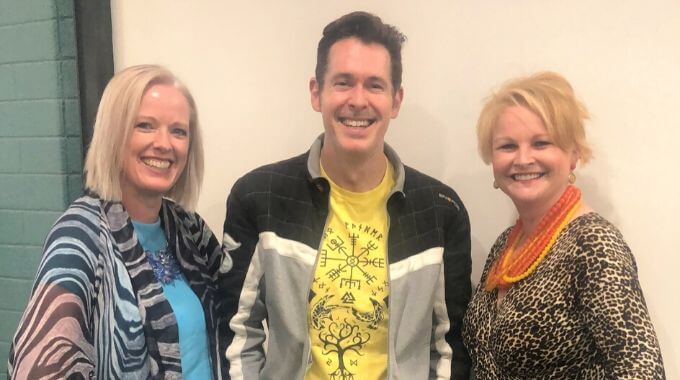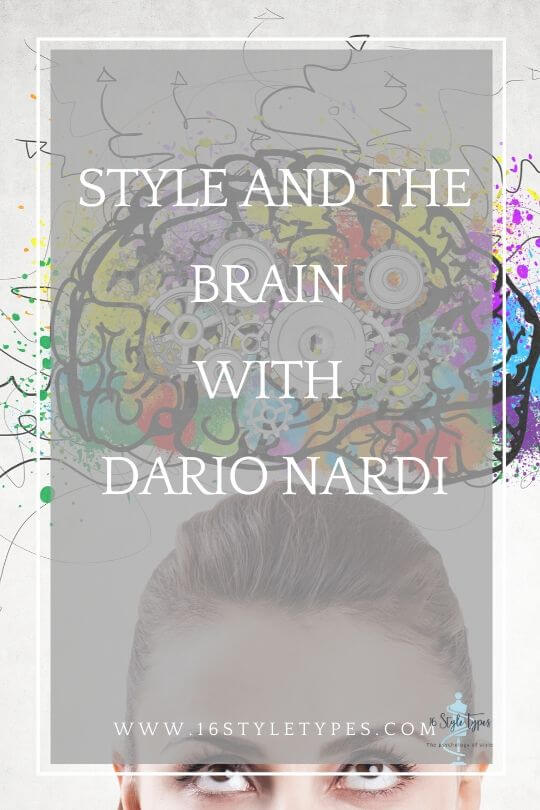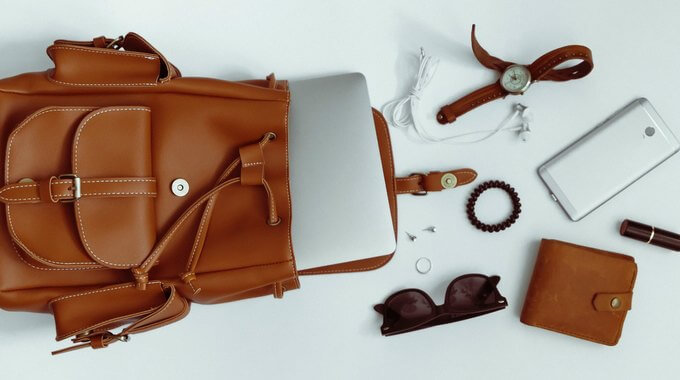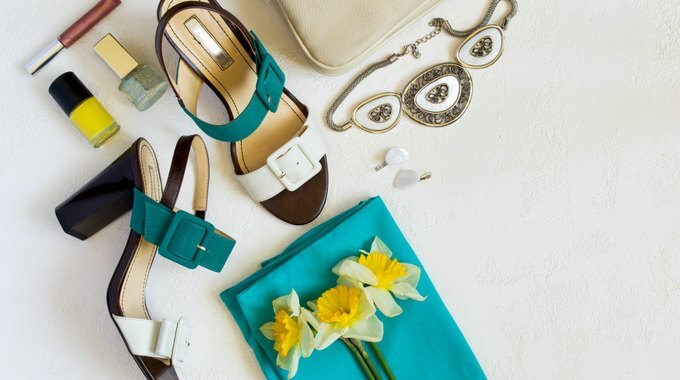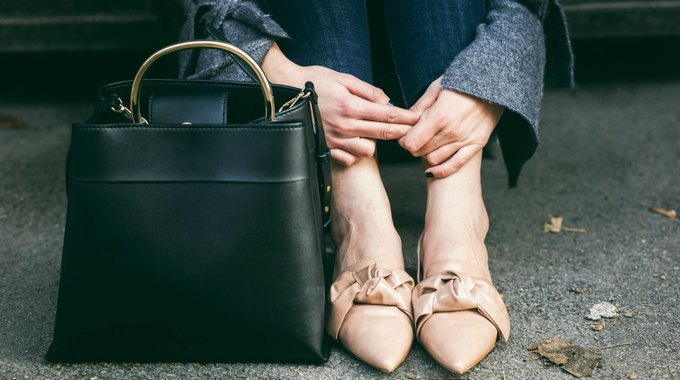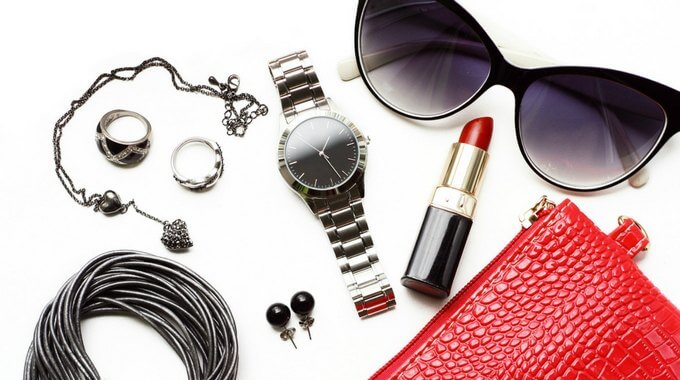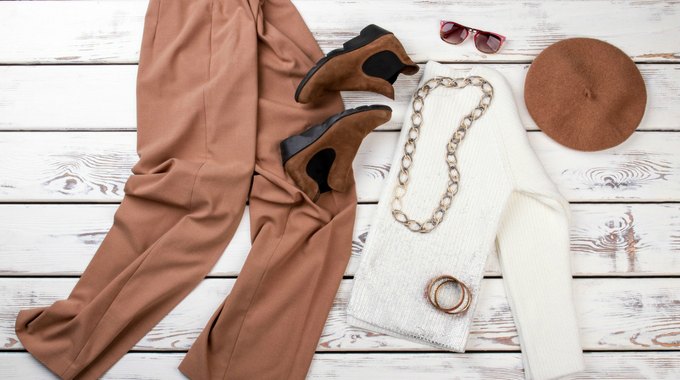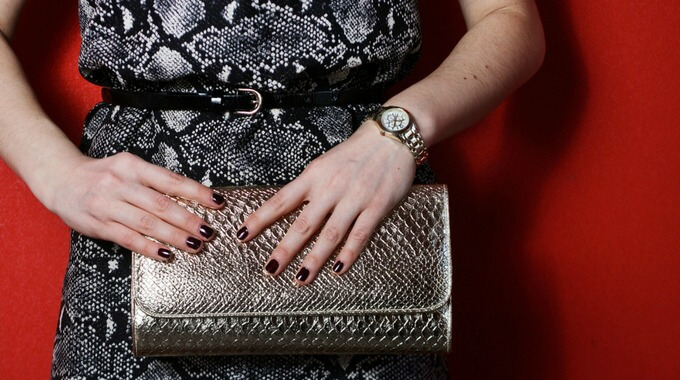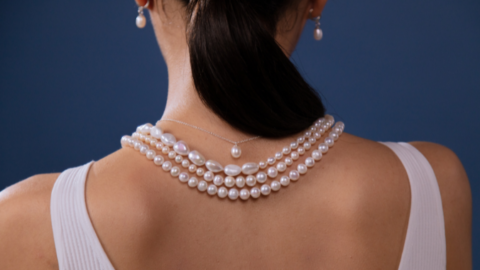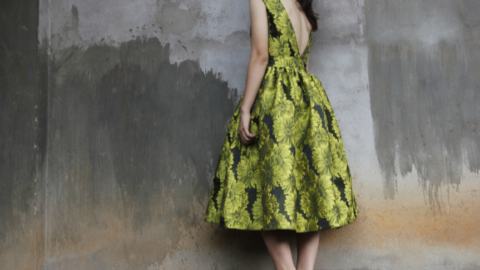Dario Nardi is world-renowned author, speaker and educator in the field of neuroscience, researching the links between brain activity and personality.
Jill and Imogen sat down with Dario recently to discuss his research and understanding of how the brain works, and the relationships between our personalities and our authentic style journeys.
What we discovered was fascinating! What we know about the brain is constantly growing – and many researchers and experts openly admit that we have only scratched the surface on all there is to learn about the brain. What we know so far is incredibly helpful in understanding how our brain trips us up and how it aids us. In every aspect of our lives, our brains are affecting how we “do life”… and one of the areas where our brains are making an impact is on our style.
Your brain can help you become more stylish, and once you learn more about how YOUR brain works, it can support you in becoming the most stylish version of yourself.
Watch the Video
In the video Dario starts by walking us through a few elements of how the brain works – a deeply complex topic. In simple terms, there are two parts of your brain. Firstly, a primal/ basic /animalistic sector with an open-ended thought process that is strongly influenced by traditions and childhood experiences. The other is a goal-focused educated sector of the brain which combines our skills and capacities as adults. Dario sometimes refers to this as the CEO part of our brain.
The goal-focused sector is activated when you are focused and make decisions, or when you have learned something new. This sector projects confidence and resists negative distractions more easily. When you use your decision-making function (Thinking or Feeling which is also known as your Judging function) you are using this sector of the brain more.
Whilst the open-ended sector prefers to follow interests as they appear; searches for more information; reflects on data and is influenced by its environment. This is the perceiving or learning and bringing in information functions – your Sensing or iNtuition preference.
We see these aspects in style applications, especially when it comes to style processes such as getting dressed for the day or going shopping.
The Brain Bias: What’s Yours?
Everyone has a bias and tends to prefer to use, or spend more time using, one over the other. We all use both sides of our brains but there is typically a preference for one over the other. This is important to know — understanding your brain gives you keys to use it better!
When you understand the dynamic nature of type, you’ll know that if you have a IxxJ or ExxP type code, you will likely spend more time in your Perceiving sector – taking in information.
Whilst if you have an ExxJ or IxxP type code, you will be likely spending more time in the Judging sector – assessing and deciding.
This bias is hard-wired into our brain’s functioning, and once you understand this, so much of what has been easy and what has been challenging for you is explained and illuminated. Wow – this is (at least part of) the reason why things have worked out for me the way they have! It’s all in how my brain bias!
Important to note that this knowledge is not intended to limit or constrain you. Instead, it should liberate you! Knowing your brain bias helps you to work out when you are at your best, and when you may need to put support structures in place to help you where you are challenged or find yourself stumbling or making mistakes you later regret.
Personal Style and Personal Identity
When considering changes to lifestyle or personal style, the goal-focused elements like to work with familiar information. This might manifest in a preference for uniform dressing or getting into a style rut. The open-ended side is willing to explore and more spontaneous so might be demonstrated by impulse purchases.
Dario suggests that in order to be comfortable and authentic in your style over the long-term, you need to reconcile both elements of your brain.
If you consider modesty and societal conformity, the sector of the brain that is aware and responsive to the reaction of others is on the opposite side of the brain to the sector that values modesty, which is more about personal identity.
A modest person may not care what someone else thinks and is driven by the bias towards the goal-focus sector of their brain. Another person may be more heavily influenced by others reactions and comments, adjusting their personal styling to suit, despite being internally uncomfortable.
Breaking and Making Habits
Breaking and forming habits which is a huge research focus in neuroscience, as the logical parts of the brains want to return to familiar and comfortable situations.
Dario tells us that the research suggests 21 days of consistency to build an easy or small habit. A larger change in lifestyle or style may take up to 3 months.
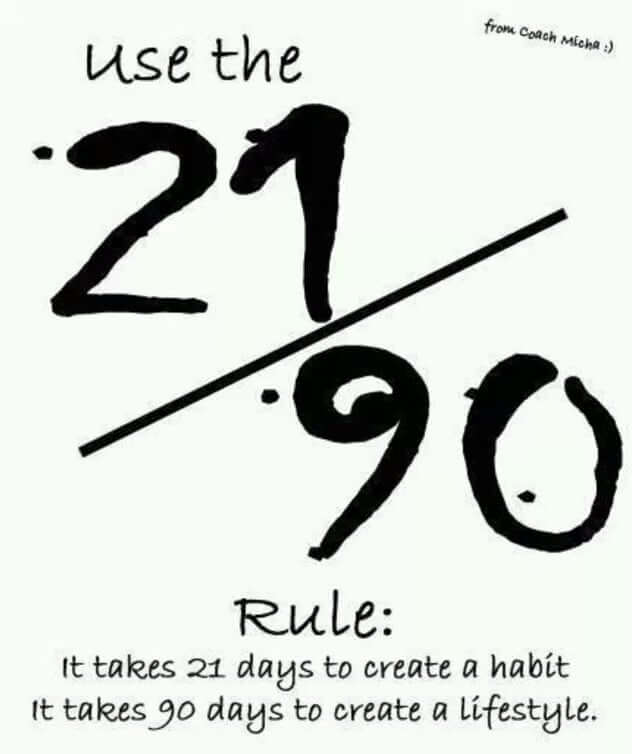
Small lapses or setbacks in momentum don’t massively impact the end results as long as you keep genuinely working towards your goal.
Whether a new habit is easy or challenging will vary widely depending on personality – some people will consider a particular style change to be minor while others will see the same change as monumental and truly game-changing. This is what makes style so fascinating – and why charting and traveling your authentic style pathway is so rewarding: you get to decide for yourself what changes to claim and make.
Small, incremental daily changes and challenges are a great place to start, as they make it easier to form new habits. This is where short challenges (see here and here for some options we offer) can be so helpful to jump-start changes to your style.
How to Become a Style Connoisseur
You can also witness the connoisseur effect when it comes to your style.
How do you become a style connoisseur?
According to Dario and the work he’s done on brain research, the idea is this: the more you understand a topic, the more critical and refined your thinking is about it, and the more detailed and specific you can be when applying it. Your learning generates more skill, and a greater degree of refinement in your thinking (and we would add, feeling) about the topic.
Sounds simple when laid out like that, but so many of us miss this! We don’t realize that becoming a style connoisseur is within the realms of possibility for us – we may believe it’s only for others. But there is a catch (of sorts): become a style connoisseur doesn’t “just happen” – there is action required.
But this is great news, as it means we all can become style connoisseurs — in our own ways. Your way of being a style connoisseur will be different to mine, and every other woman’s (including women of your Style Type — remember we are individuals, not Types!). But you can become a style connoisseur, make no mistake.
We have provided opportunities for women all over the world to do this, within our collective style programs (including our premier Your Type of Style online membership program, as well as Imogen’s 7 Steps to Style).
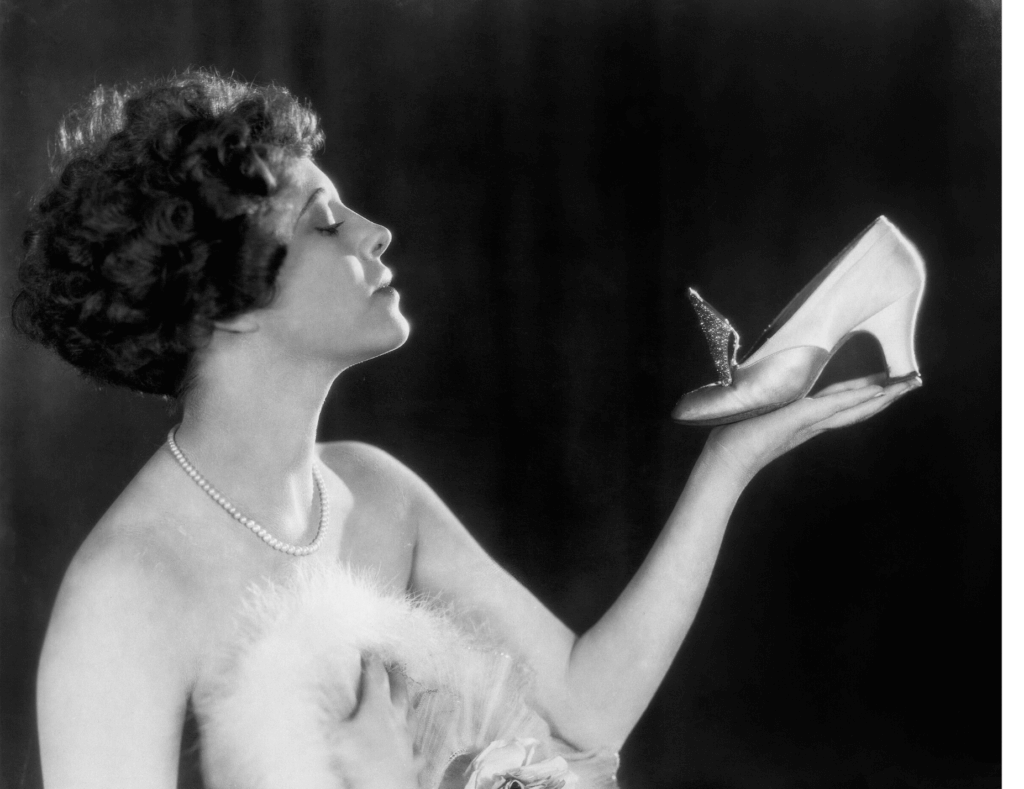
We can all become a style connoisseur – by understanding how the brain works
We’ve certainly noticed the power of the connoisseur effect in our Your Type of Style program, which is an online membership program like no other, linking style + self-discovery in a unique and impactful way. Over time, not only do participants learn and apply the concepts to themselves, but they begin to give helpful feedback to other participants about their outfits and style journeys.
This is part of becoming a connoisseur of style – learning style concepts and seeking opportunities to share and apply those learning’s – to yourself, first and foremost, but (if you choose) with others.
You become more stylish the more your ways of thinking and feeling about as well as applying style are refined. Women who do this become truly authentic light-holders and standard-bearers of style.
Your Brain Can Help You Become Your Most Stylish Self
Our brains are seeking balance and harmony. This balance and harmony is individual — what is balance and harmony to me may not be so for you, and vice versa. Our brains are all wired differently.
An outcome of coming to your style through the 16 Styles Types approach is to provide an opportunity for women to look in the mirror, and to see that the image they project truly reflects their personality.
When this happens, it provides the brain with that all-important a sense of harmony. Important to note that this is not (necessarily) symmetry or predictability. What we’re talking about here is an innate sense of balance – of brain balance.
This is another great example of how understanding your brain helps you become your most stylish self.
Style Advice from Dario
And finally, Dario’s secret to great style? With preferences for INTJ, Dario has a strategic approach to style (like other NT Style Strategists). His advice is to wear what enhances your natural appearance. In particular, learn the colors that work with your natural coloring, and the styles that flatter your figure.
We believe that all 16 Style Types are stylish, and each has a wonderful perspective which the rest of us can learn and benefit from (something we discuss in our regular Facebook Live videos). So we say: that’s great advice, Dario – we couldn’t agree more!
